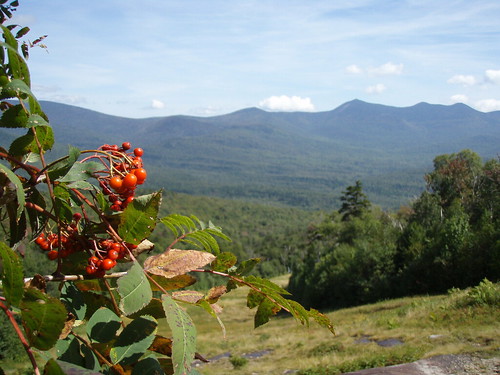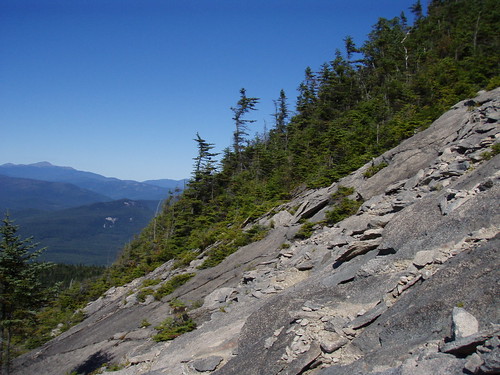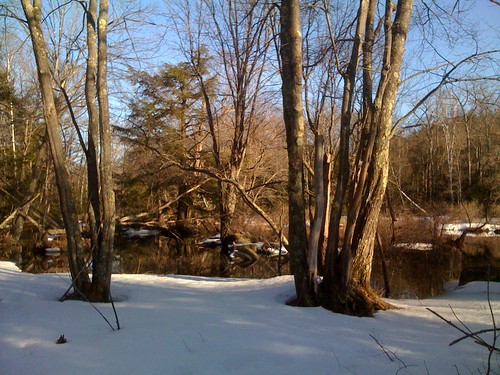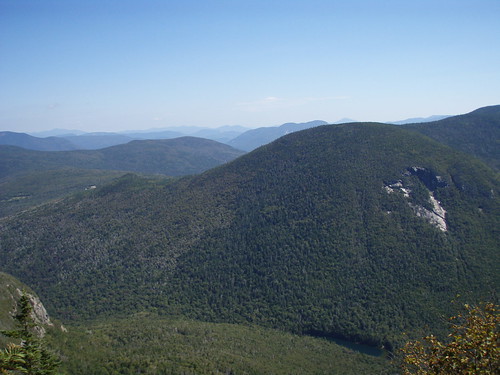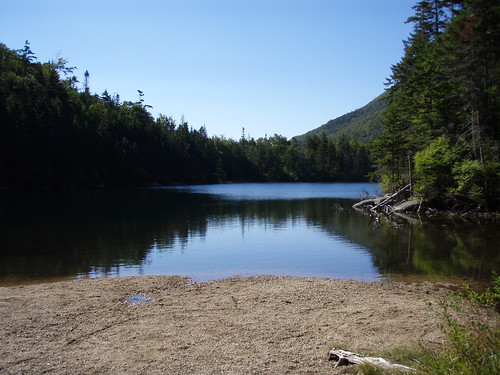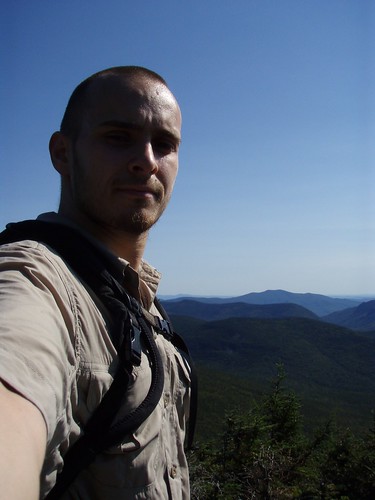After watching Space Shuttle Discovery take off from Cape Canaveral (video), I drove nine hours to Georgetown, SC where I met with a friend for dinner and spent the evening in my first Bed & Breakfast; the house was built in the early 1800s, but it was in fantastic shape (video).
From there I drove 4 hours north and stayed with a friend just outside Raleigh, NC, where I had a delicious home-cooked vegan dinner and enjoyed a relaxing evening. The next morning I drove another 4 hours and met a friend for tea just outside Richmond, VA.
The thing that I noticed about South Carolina, North Carolina, and Virginia was the sheer number of trees that seemed to be everywhere. And these weren't just any trees (pic); they were huge! Most of them were three times the height of telephone poles (i.e., several hundred feet tall).
A few months ago when I drove from New Hampshire down to Florida by going through Indiana, Ohio, Tennessee, Kentucky, and Georgia, I remember thinking to myself over and over, "Wow, this country is huge!".
The same exact thought occurred to me again going from Florida back up to New Hampshire, only now I was realizing what a rich country this was (both its manmade buildings and roads, and in its huge quantity of natural resources).
I'm also blown away by the fact hat after all the driving I've done in the past two months, I've barely scratched a third of the continental United States!
On Thursday I drove into Washington, DC, met a friend, had dinner, and then attended my first real stadium-style sports game: a hockey game (pic) between the Boston Bruins and the Washington Capitals. The noise was incredible: there was a meter that showed the noise and it reached 120db a few times. Several people were removed from the stadium by security guards for causing trouble.
When the Capitals finally won and we left the stadium, the noise and rowdiness followed us out. We were on the highway in traffic leaving the city and there were still people beeping their horns to the Capitals chant.
Several times I was warned about the terrible Washington, DC traffic, but having never driven in DC I had no first-hand experience. I can tell you now, it holds to its reputation. At one point it took me 45 minutes to travel 5 miles. No matter what time of the day or night, there always seemed to be a huge volume of cars on the road.
Several expressways have automated systems for catching speeding cars: radars with cameras that clocked your speed and took a photo if you were speeding; a ticket is automatically mailed to you several days later.
I spent Friday visiting the Udvar-Hazy Center at the National Air & Space Museum and getting a members-only preview of Space Shuttle Discovery (photos).
I watched Discovery launch into space last year. Standing not more than five feet away after seeing her fly over my head only a few days earlier on the back of a Boeing 747 was absolutely breathtaking.
Several friends that I had made during the NASA Tweetup last year came down for the special event and it was really nice reconnecting with them. One of them who happens to live just outside DC let myself and several others stay at her house for a few days. I was reminded yet again how some friendships never die. Relationships forged by a mutual appreciation for something greater than the individual seem to breathe a life of their own.
On Saturday I dropped a friend off at Dulles International Airport. When I took the wrong exit out of the airport (and paid a $4 toll), I decided to take advantage of my "mistake" and choose a longer, but more scenic route back to New Hampshire.
I drove through Virginia, Maryland, Pennsylvania, New York, Connecticut, and Massachusetts on US-15, I-81, I-84, and I-90, avoiding entirely the more common, and far more mundane, I-95.
In fact, I enjoyed this alternate route so much that the 12-hours of driving was probably my favorite stretch of the entire road trip. I passed so many farms with horses, cows, and cattle, drove through many different types of forests, over huge rivers, and across mountain ranges. On top of all that, the weather was perfect the entire day. (Road trip photos here.)
By the time I arrived at my parents house in New Hampshire, I felt like I was in a trance, as if my mind and body were one with the vehicle. When I arrived back in familiar territory in Massachusetts, it was hard to believe that I had been in Florida only a few days earlier; reality felt unreal.
I also began to realize that I probably won't be driving through any of the states I just went through for a long time. While I enjoy driving (perhaps even long-distance driving the when the scenery is enjoyable), I think it's an incredible wasteful form of transportation, both in terms of time and fuel.
On my way down to Florida, I drove 2,498 miles (4,020 km), using about 100 gallons (378 liters) of fuel which cost me around $375. On my return to New Hampshire, I drove 1,679 miles (2,702 km), using about 65 gallons (246 liters) of fuel, which cost me around $250.
In total, I drove 4,177 miles (6,722 km), burned 165 gallons (624 liters) of fuel, and spent about $625.
But more importantly, I spent about 100 hours of my life sitting in a chair, staring out the window, and causing my body physical and metal stress over controlling a several-thousand-pound hunk of metal.
Driving is, without a doubt, a job best handled by a robot and I for one cannot wait until the day when we can all step into a vehicle, tell it where we want to go, and then spend our time being productive, calm, and enjoying our humanity.
The state of Nevada recently became the first state in the world to offer a driving license for a robot. They haven't issued any yet, but they have issued several learning permits.



